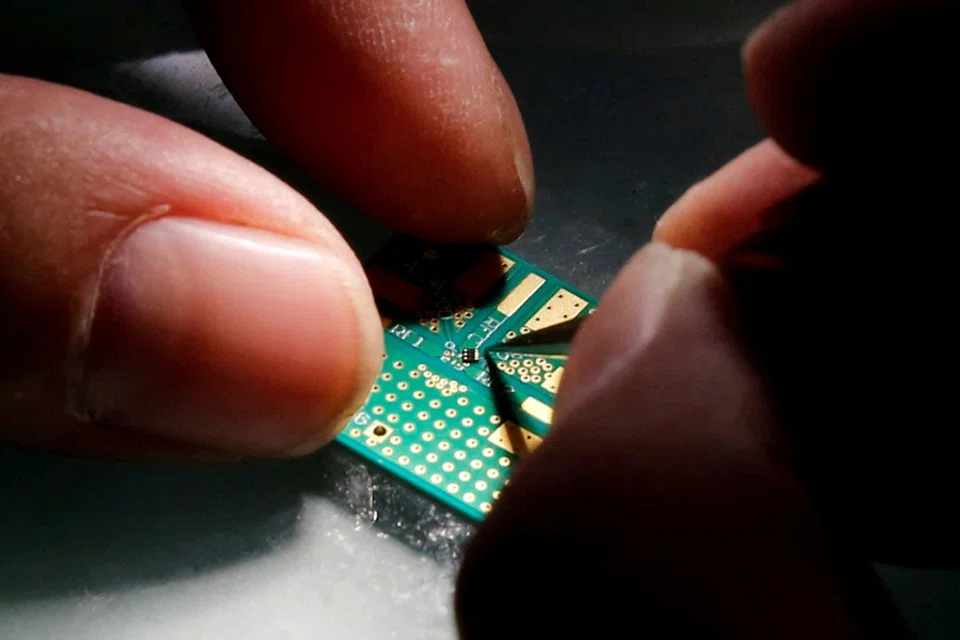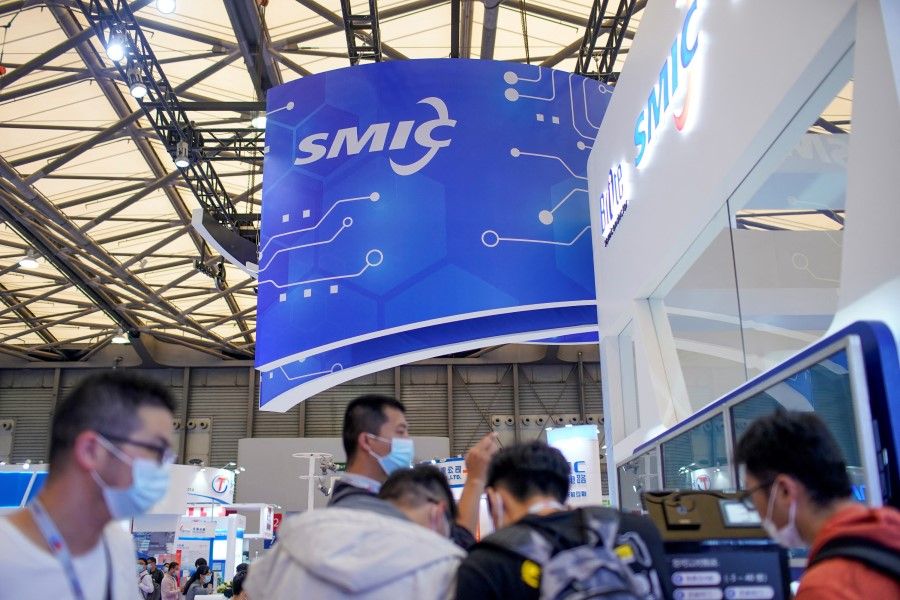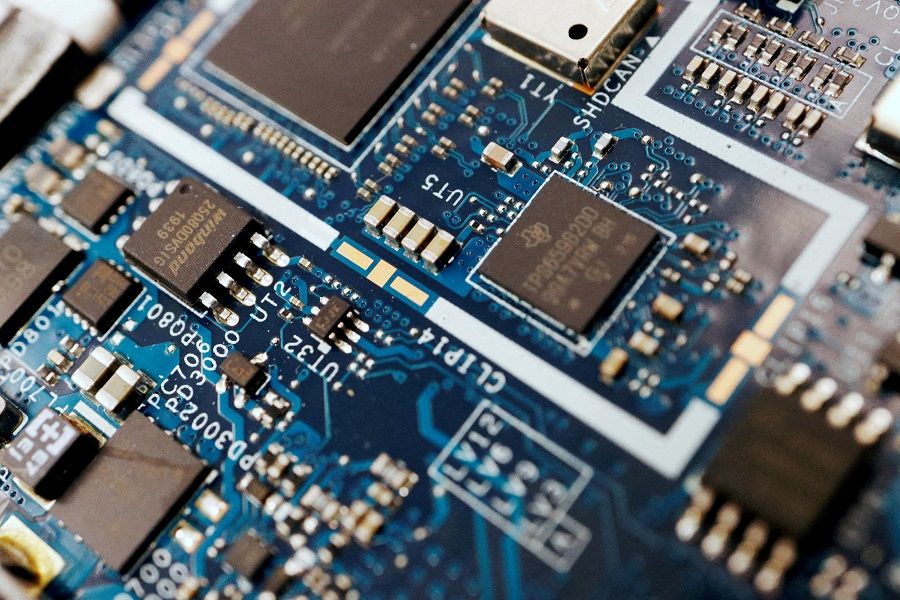Can China's semiconductor industry survive under sanctions and the Chip 4 alliance?

As part of its technology containment strategy against China, in March 2022, the US government proposed a "Chip 4" alliance comprising the US, Japan, South Korea and Taiwan, to exclude mainland China from the global supply chain for advanced semiconductors.
Japan has an irreplaceable advantage in semiconductor equipment and materials, as do South Korea and Taiwan in advanced processes in semiconductor manufacturing. If these three economies - as well as the Netherlands and its photolithography machine manufacturer ASML - go along with the US and expand export controls to all products, equipment, materials, technology and human resource related to advanced manufacturing, China would admittedly have little chance of succeeding in the advanced semiconductor industry given its current technical framework.
However, China's mega-economy is highly resilient, and I believe that the country could continue to boost its semiconductor industry in the following three areas.
Developing mature semiconductor processes
First, there is still an enormous amount of room for Chinese companies to develop in terms of mature semiconductor processes. The chips used in the pillar industries of the digital economy such as new energy vehicles, the Internet of Things (IoT) and 5G services are mainly concentrated in mature processes. According to China Electronics News, mature semiconductor processes could account for 75-80% of market production capacity in the next three years.
... developing mature processes could reinforce the currently weak Chinese semiconductor industry's capabilities and nurture talents, and build an innovative community centred around local companies.

As a result of US sanctions, China's largest semiconductor manufacturer SMIC (Semiconductor Manufacturing International Corporation) has shifted its focus to mature processes. Nikkei estimates that SMIC's production capacity for 28-nanometre process and above could increase by 30-40% annually.
Significantly, developing mature processes could reinforce the currently weak Chinese semiconductor industry's capabilities and nurture talents, and build an innovative community centred around local companies. Indeed, the semiconductor industry has a very strong knock-on effect - the rise of China's semiconductor manufacturers has led to the growth of local suppliers of electronic design automation software, and semiconductor materials and equipment.
At the International Technical Exhibition on Image Technology and Equipment in Yokohama, I met a supplier of optical lenses for industrial use. The company leveraged the semiconductor industry and within a couple of years rapidly grew from a small company in the mobile phone supply chain to a hidden champion in the domestic market.
Emerging technologies
Second, the paradigm shift in semiconductor technology will bring new opportunities for Chinese companies. One main reason for the rapid development in China's high-tech sector in the past decade is that it successfully took advantage of the fourth industrial revolution to overtake others through the use of the IoT, artificial intelligence and 5G.
The semiconductor industry is facing a similar situation. Currently, Moore's law has reached its limit, while new materials such as gallium oxide, new integrated technology such as Chiplet, and new open-source chip architecture such as RISC-V, continue to emerge in the post-Moore era. Therefore, China and the Chip 4 alliance are standing on the same starting line in terms of these new technologies.
Because of its massive market, China is capable of driving competition among multiple technological roadmaps at the same time.

Whether a new technology can be successfully used for commercial purposes not only depends on the technology level but also on whether the relevant technological roadmap can be widely adopted by the industry. Because of its massive market, China is capable of driving competition among multiple technological roadmaps at the same time. It can then establish the winning technological roadmap as the international standard based on the strengths of its domestic market, thus allowing Chinese enterprises to dash to the forefront of the industry.
Relying on whole-nation approach
Next, under the country's new "whole nation" system, China could carve out a development path that is less reliant on advanced chips and semiconductor equipment through a government-led computing power network. While the semiconductor industry had symbolised the failure of the new whole nation system due to the Big Fund corruption scandal, the reality is not so simple.
Taking the "Eastern Data and Western Computing" (东数西算) project as an example, China's computing resources are currently concentrated in the eastern regions while the western regions are rich in renewable energy resources and have great potential for developing data centres. The project thus aims to channel computing resources from the east to the west by building a new computing power network that integrates data centres, cloud computing and big data for data centre optimisation.
China still has the potential to build its own semiconductor supply chain and drive the digital transformation of the entire society by leveraging mature processes, emerging technologies and the national computing power network.

WeChat account "Bai Xiniu Tongxin" (白犀牛通信) analysed that the Chinese government's centralised development of advanced computing power will help various enterprises and industries save on investments in computing power, in turn reducing society's dependence on advanced semiconductors and related equipment, as well as enhancing the security capabilities of the country's entire computing industry.
While the Chip 4 alliance will significantly affect China's plans to develop advanced semiconductors, China still has the potential to build its own semiconductor supply chain and drive the digital transformation of the entire society by leveraging mature processes, emerging technologies and the national computing power network.
Notably, semiconductors are technological products with the highest level of international division of labour. So, the greater the degree of independent innovation in Chinese semiconductors, the more it needs to strengthen international cooperation.
The US often stresses the need to uphold the rules-based international order, while Japan, as a key member of the Chip 4 alliance, sees free trade as the country's foundation. Hence, in order to strengthen and further develop its semiconductor industry, China should adhere to and reasonably make use of free trade agreements, and continue to promote technological cooperation with relevant parties, including the Chip 4 alliance, outside the scope of export control provisions.
This article was first published in Lianhe Zaobao as "中国如何应对晶片四方联盟?".
Related: Will US chip controls work on China? | US sanctions forcing Chinese firms to switch to made-in-China tech | Huawei founder: Global economic outlook will be grim for next few years | Can Taiwan hold on to its lead in chip manufacturing? | Has the US crushed China's hopes for self-sufficiency in the chip industry? | The end of the global chip shortage: Now, chips won't sell
